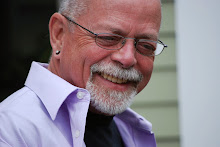Tuesday, September 17, 2013
The validity of the lives we lead
“I don’t really think that it makes sense for a work of art to take on a social purpose. Just because there are so many constraints that you’re working under already — what material is available to you, what your capabilities are with the abilities you have, what will the market bear, what’s the nature of your audience — these are the constraints you have to satisfy. If you have a purpose of social reform, I don’t think it’d be art.”
Caleb Crain, who wrote Necessary Errors, said these words, which were reported recently by Daniel D’Addario in Salon. Reading them, I begin to think of the “social purpose” in novels I have read and of the “social purpose” in three of the novels I have written. In the third sentence above, Crain defines “social purpose” as “social reform,” meaning, I think, that when Macbeth argues against regicide Shakespeare’s social purpose is to support the Tudor myths, and that is impermissible in a work of art. But he couldn’t mean that. I guess that a study of literature could argue that half the works of literary are about the causes or the effects of murder of one kind or another.
The sixth commandment, Thou shalt not kill, is a kind of tennis net that functions in the literary work for the character to deal with. It exists in thousands of novels, causing difficulties, suffering, illumination, more suffering, and in the end, sometimes, release. A social purpose is a subject like anything else, and it exists to be written about and to be dealt with by the character.
An elaboration of the sixth commandment, Thou shalt not kill gay people, exists the same way. We have hundreds of plays and novels about killing the king, but almost none about killing the gay kid next door. Listening to Caleb Crain, it would seem that the former are art and the latter not. He thinks we should not write about the moment when the gay kid next door is murdered or about its consequences, because this would give the novel social purpose. This murder is intrinsically important. It is interesting. It has moral significance. In fact, killing the gay kid next door satisfies every one of Aristotle’s requirements for tragedy, including, as we have seen in our own lives, the disruption of all society when the victim is found tied to a fence on the prairie outside of Laramie. Or, to choose an illustration closer to home, the murder of Bernie Mallett in Ceremonies, the first novel of the Stonewall Triptych, which then disrupts everything in Cardiff, Maine, and destroys the accommodation straight Mainers had made with the gay people in their midst. And nothing is ever the same again.
It’s not the social purpose that makes bad novels out of gay political events or movements. I doubt that every work of art is, as Craig would have it, its own thing. I think of Guernica. Of September 1, 1939. Of Intruder in the Dust. Of Mrs. Dalloway. A novelist, dealing with all the constraints that Crain lists in the first paragraph above, can surely find space in his novel to make the point that Murdering a gay kid violates the same codes that murdering a king or a queen or a president or four little girls in a Birmingham church. Now, to be clear, not all novels are about murder. Some are about men falling in love with one another, and, given the realities of literature, it is true that not even most novels have to be about heavy subjects. But it is legitimate—and appropriate—when an author chooses to write about the murder of a gay person, to believe that that event is not a merely private event, and is worth of the effort of both writer and reader.
I don’t think gay literature has been dumbed down by writers who have a social purpose. We live among social purposes all the time, all day, every day. A novel about my going to the Boston Common at seven o’clock six days ago to join a demonstration against any action against Syria can be as compelling as anything being published today—it might be a very long novel, with a cast of thousands, and a very complicated plot, and, of course, a profound and subtle treatment of its subject. What is dumbing down our literature is the publisher saying, Don’t write about it. It will offend somebody, including straight people, and the readers saying, Don’t disturb me. The result is that we can’t find books about ourselves. Even though most of us—or many of us—live lives which are deeply political, and even though many of us are deeply anguished by the politics and the violence of our lives. We are already disturbed.
We can’t continue to allow publishers and writers to ignore the lives we lead.
